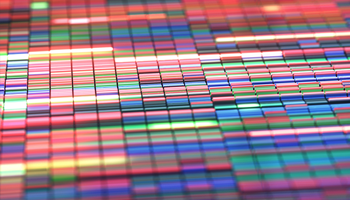HOW CAN WE HELP YOU? Call 1-800-TRY-CHOP
In This Section
Why Should We Automatically Reanalyze Genetics Test Results?

The findings:
The human genome contains approximately 20,000 genes, and exome analysis focuses on about 7,000 genes known in medical literature to be clinically associated with a disease. Currently, up to 70 percent of exome test reports are negative or inconclusive. But suppose at a later date a researcher discovers a gene that could be causative of the disease?
Children’s Hospital of Philadelphia researchers led by Avni Santani, PhD, associate professor of Clinical Pathology, developed a useful tool for automated reanalysis that facilitates efficient reevaluation of nondiagnostic clinical exome sequencing (CES) samples using up-to-date literature published after the initial exome analysis was performed. They demonstrated this methodology enabled identification of novel diagnostic findings in almost 16 percent of previously nondiagnostic samples.
Why it matters:
Approximately 250 novel gene–disease and 9,200 novel variant–disease associations are reported each year, the study authors noted. Keeping up with the fast pace of these discoveries and performing routine reanalysis of nondiagnostic CES samples in a manner that is efficient, scalable, and cost-effective remains a significant challenge for clinical laboratories. The study team described steps of their automated reanalysis pipeline that could help clinical laboratories to streamline their reanalysis efforts and reduce workload.
Patients who have nondiagnostic CES samples that are automatically reanalyzed with the most up-to-date literature after initial genetic testing may be able to take preventive steps or receive early treatment for a newly diagnosed disease.
Who conducted the study:
Study Principal Investigator Dr. Avni Santani led a team of CHOP researchers from the Division of Genomic Diagnostics who reported the results of the novel automated reanalysis methodology.
How they did it:
Samuel Baker, PhD, lead study author and a fellow in the Clinical Laboratory Genetics Program, commented: “Our team designed the iterative reanalysis algorithm and applied it to 240 nondiagnostic CES samples initially analyzed between 2014 and 2017. We found that by using the algorithm we were able to identify 38 novel diagnoses within the 240 samples and reduced the workload required for reanalysis by 93.3 percent, compared to the initial analysis.”
Quick thoughts:
“We expect structured, automated CES reanalysis tools to be essential for reassessment of nondiagnostic CES samples in clinical laboratories with rapidly growing CES cohorts,” Dr. Santani said. “Although the pipeline was designed to enable efficient and sensitive retrospective analysis, it is conceivable that annotations output by the pipeline may facilitate prospective analysis of new CES samples. We have received positive feedback from our clinicians who have received novel diagnoses for several previously undiagnosed patients. Many of these patients had been through a diagnostic odyssey which can be a tremendous source of stress for the family.”
What’s next:
While this work describes a solution for identifying novel diagnostic genes during automated reanalysis of nondiagnostic CES samples, multiple follow-up steps that are critical for clinical laboratories, including Sanger confirmation of diagnostic variants, writing of report addendums, and communication of the new results to the ordering clinicians, will still need to be addressed.
“There is a lot more that can be done,” Dr. Santani said. “For example, phenotypes play an important role for genetic testing. A negative exome test at age 1 is likely to be less informative as some of these syndromes are multi-systemic and likely to evolve over time as the child grows older. This is especially relevant in the pediatric setting. We need to develop systems and data capture strategies from the electronic health record that can take into account the evolving phenotypes and integrate that with new genomic information.
“Finally, informatics and sequencing technologies continue to innovate and improve at a blindingly rapid pace. Some patients may benefit from these new technologies that can identify novel variants, sequence areas of the genome that were previously not addressed, and hopefully lead us to a diagnosis.”
Where the study was published:
The study appeared in The Journal of Molecular Diagnostics.
Where to learn more:
Learn more about the Department of Pediatrics and Division of Genomic Diagnostics at CHOP.


